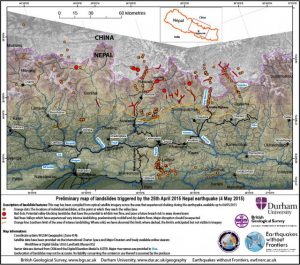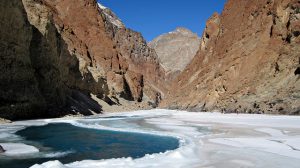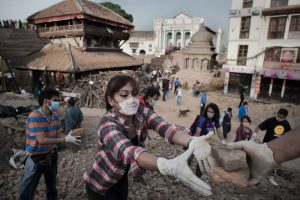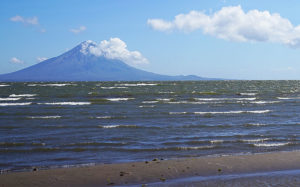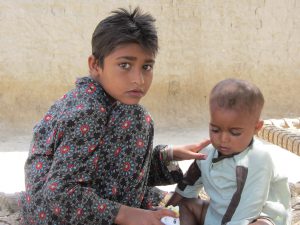The death toll from Saturday’s earthquake in Nepal has now passed 5,000 and officials say it is likely to increase to 10,000.
Claims of slow disaster relief have kindled growing public frustration with the Nepalese government, which has struggled to deliver food, water, tents and other aid across the mountainous country of 28 million people.
Bad weather around Kathmandu and other devastated districts put a halt to rescue efforts for some hours on Tuesday and prevented Indian Army helicopters landing in Gorkha district, one of the worst hit regions of western Nepal.
Relief and rescue operations have been inadequate in Gorkha, a remote area in the Himalayan foothills where some villages have been completely flattened.
The government say a temporary camp has been established in Barpak—at the epicentre of the earthquake— and rescue work is underway. But people near the district headquarters haven’t received tents, let alone the most affected villages like Laprak and Barpak, said Nabin Baral, a photojournalist who managed to reach the area.
People in the Mount Everest region in eastern Nepal are facing a similar plight. Namche— a village on the way to Everest base camp – and Thame have suffered serious damage, but no relief has reached the area.
“Some private helicopters have been rescuing tourists, but locals have no choice and even those injured are yet to be rescued,” said Saurav Dhakal, another journalist who was on a trek in the region. The earthquake triggered a huge avalanche on the mountain that killed at least 17 climbers and guides.
Seventy tourists including some severely injured locals were rescued from Lukla, a tiny village at the base of Mount Everest on Monday, but flights were suspended on Tuesday due to bad weather, leaving hundreds of tourists stranded.
Relief piles up
Foreign aid is arriving but being hampered by congestion at Kathmandu’s sole airport. So far relief efforts have been concentrated in Kathmandu and surrounding districts and people are increasingly venting their frustration at the government’s inefficient and slow response on social media.
India and China have deployed the largest rescue teams, including planes. Bhutan, Israel, the Netherlands and Turkey are some of the countries have already deployed teams on the ground.
Water shortages in Kathmandu
Thousands of people fled Kathmandu after the quake as the city started to face water and food shortages.
The government asked businesses to remain open to ease shortages of food and other essential goods, but few groceries and shops were open on Tuesday, exacerbating problems.
Fears are still running high as over one hundred aftershocks have shaken the country since Saturday morning.
Though the country has not felt any big tremors in last 24 hours, people are still camping in makeshift tents or out in the open.
With the lack of safe drinking water and toilets there are fears about the spread of diseases.


